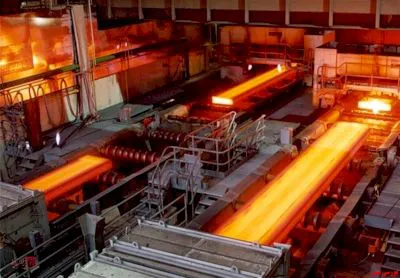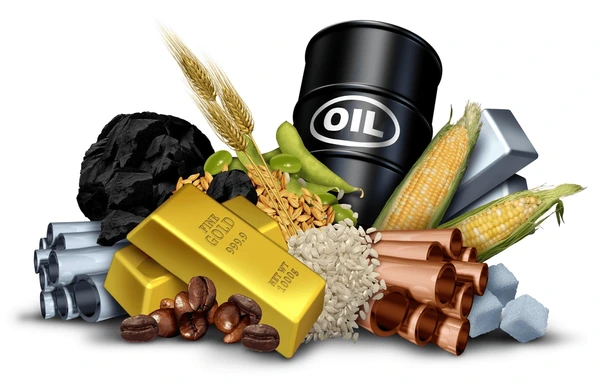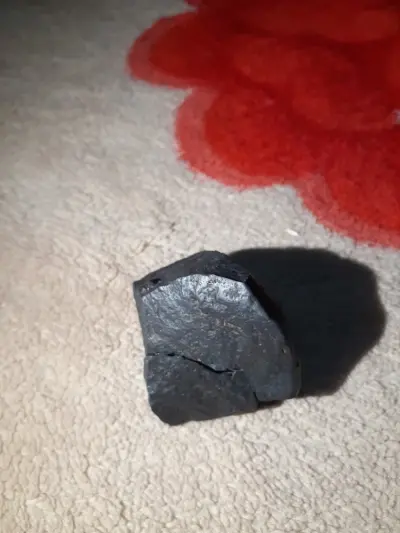Steel trade in Afghanistan - Exporting Steel to Afghanistan
- Anbar Asia
- Trade with Afghanistan
- Afghanistan's Metals market
- Steel trade in Afghanistan
- Afghanistan
 سنگ قیمتیAgate
سنگ قیمتیAgate - Afghanistan
 هیچ کدامDiamond
هیچ کدامDiamond - Afghanistan
 هنگ یا آنغوزهMedicinal Plants
هنگ یا آنغوزهMedicinal Plants - Afghanistan
 Marine precious stones of AfghanistanRuby, Agate, Diamond, Amber, Topaz, Emerald, Jade, Spinel, Meteorite
Marine precious stones of AfghanistanRuby, Agate, Diamond, Amber, Topaz, Emerald, Jade, Spinel, Meteorite - Afghanistan
 صنایع دستی هزارگیHandicrafts
صنایع دستی هزارگیHandicrafts - Afghanistan
 شهاب سنگ مریخیMeteorite
شهاب سنگ مریخیMeteorite - Afghanistan
 سنگ های قیمتیMeteorite
سنگ های قیمتیMeteorite - Afghanistan
 آلمونیمAluminum
آلمونیمAluminum - Afghanistan

 شهاب سنگMeteorite
شهاب سنگMeteorite - Afghanistan
 تجارت سنکه قیمتی از افغانستانEmerald
تجارت سنکه قیمتی از افغانستانEmerald - Afghanistan
 شهاب سنگMeteorite
شهاب سنگMeteorite - Afghanistan
 LapisLazuli ,Emerald, Ruby, Sapphire, Tourmaline, Aquamarine, Spinel, TopazGalena, Chalcopyrite, Hematite, Turquoise, Ruby, Agate, Lapis Lazuli, Topaz, Emerald, Charoite, Spinel, Pearl
LapisLazuli ,Emerald, Ruby, Sapphire, Tourmaline, Aquamarine, Spinel, TopazGalena, Chalcopyrite, Hematite, Turquoise, Ruby, Agate, Lapis Lazuli, Topaz, Emerald, Charoite, Spinel, Pearl - Afghanistan
 اسید سولفوریکAmmonia, Chlorine, Nitrogen, Oxygen, Phosphoric Acid, Sulfuric Acid
اسید سولفوریکAmmonia, Chlorine, Nitrogen, Oxygen, Phosphoric Acid, Sulfuric Acid - Afghanistan
 سنگ های قیمتیHematite
سنگ های قیمتیHematite - Afghanistan
 شهاب سنگMeteorite
شهاب سنگMeteorite - Afghanistan
 سنگ های قیمتیRuby, Diamond, Lapis Lazuli, Topaz, Emerald, Jade, Spinel
سنگ های قیمتیRuby, Diamond, Lapis Lazuli, Topaz, Emerald, Jade, Spinel - Afghanistan
 سنگ های قیمتی وشهاب سنگTurquoise, Ruby, Agate, Meteorite
سنگ های قیمتی وشهاب سنگTurquoise, Ruby, Agate, Meteorite - Afghanistan
 GemstoneTurquoise, Ruby, Agate, Diamond, Lapis Lazuli, Amber, Topaz, Emerald, Jade, Charoite, Spinel, Chrysocolla, Pearl, Meteorite, Tanzanite, Fossil
GemstoneTurquoise, Ruby, Agate, Diamond, Lapis Lazuli, Amber, Topaz, Emerald, Jade, Charoite, Spinel, Chrysocolla, Pearl, Meteorite, Tanzanite, Fossil - Afghanistan
 سنگ ساختمانی موتر ویشیTravertine
سنگ ساختمانی موتر ویشیTravertine - Afghanistan
 Ruby, Emerald, Tourmaline, Garnets...etcHematite, Ruby, Agate, Lapis Lazuli, Topaz, Emerald, Jade, Spinel, Meteorite
Ruby, Emerald, Tourmaline, Garnets...etcHematite, Ruby, Agate, Lapis Lazuli, Topaz, Emerald, Jade, Spinel, Meteorite - Afghanistan
 سنگ قیمتیEmerald
سنگ قیمتیEmerald - Afghanistan
 crystalBauxite, Chalcopyrite, Cassitrite, Chromite
crystalBauxite, Chalcopyrite, Cassitrite, Chromite - Afghanistan
 بلال احمد باورNuts, Spices, Handicrafts, Carpet, Folk Costume, Decorative Arts
بلال احمد باورNuts, Spices, Handicrafts, Carpet, Folk Costume, Decorative Arts - Afghanistan
 سنگ مرمر، سنگ رخام، گرانیت، سرب، زینک، تالک، گرافیت، زغالسنگGranite, Marble, Travertine, Quartzite, Bauxite, Galena, Chromite, Coal, Agate, Jade
سنگ مرمر، سنگ رخام، گرانیت، سرب، زینک، تالک، گرافیت، زغالسنگGranite, Marble, Travertine, Quartzite, Bauxite, Galena, Chromite, Coal, Agate, Jade - Afghanistan

 الماسGranite, Sandstone, Bauxite, Galena, Chalcopyrite, Cassitrite, Hematite, Chromite, Sphalerite, Turquoise, Ruby, Agate, Diamond, Amber, Topaz, Emerald, Jade, Charoite, Spinel, Chrysocolla, Pearl, Meteorite, Tanzanite, Fossil
الماسGranite, Sandstone, Bauxite, Galena, Chalcopyrite, Cassitrite, Hematite, Chromite, Sphalerite, Turquoise, Ruby, Agate, Diamond, Amber, Topaz, Emerald, Jade, Charoite, Spinel, Chrysocolla, Pearl, Meteorite, Tanzanite, Fossil



 Sohrab Nazari3 days ago
Sohrab Nazari3 days ago سنگ قیمتیAgate
سنگ قیمتیAgate عتیق الله2 weeks ago
عتیق الله2 weeks ago هیچ کدامDiamond
هیچ کدامDiamond شادمحمد ولیزاده2 weeks ago
شادمحمد ولیزاده2 weeks ago هنگ یا آنغوزهMedicinal Plants
هنگ یا آنغوزهMedicinal Plants Anwar Stanikzai3 weeks ago
Anwar Stanikzai3 weeks ago Marine precious stones of AfghanistanRuby, Agate, Diamond, Amber, Topaz, Emerald, Jade, Spinel, Meteorite
Marine precious stones of AfghanistanRuby, Agate, Diamond, Amber, Topaz, Emerald, Jade, Spinel, Meteorite Benaziryosufi1 months ago
Benaziryosufi1 months ago صنایع دستی هزارگیHandicrafts
صنایع دستی هزارگیHandicrafts افغان سنگ1 months ago
افغان سنگ1 months ago شهاب سنگ مریخیMeteorite
شهاب سنگ مریخیMeteorite احمد1 months ago
احمد1 months ago سنگ های قیمتیMeteorite
سنگ های قیمتیMeteorite شرکت تولیدی شمش آلومینیوم1 months ago
شرکت تولیدی شمش آلومینیوم1 months ago آلمونیمAluminum
آلمونیمAluminum Abdul Rashid ajel2 months ago
Abdul Rashid ajel2 months ago
 شهاب سنگMeteorite
شهاب سنگMeteorite مه تجارت سنکه میکونم2 months ago
مه تجارت سنکه میکونم2 months ago تجارت سنکه قیمتی از افغانستانEmerald
تجارت سنکه قیمتی از افغانستانEmerald شهاب سنگ3 months ago
شهاب سنگ3 months ago شهاب سنگMeteorite
شهاب سنگMeteorite Omri Sahib3 months ago
Omri Sahib3 months ago LapisLazuli ,Emerald, Ruby, Sapphire, Tourmaline, Aquamarine, Spinel, TopazGalena, Chalcopyrite, Hematite, Turquoise, Ruby, Agate, Lapis Lazuli, Topaz, Emerald, Charoite, Spinel, Pearl
LapisLazuli ,Emerald, Ruby, Sapphire, Tourmaline, Aquamarine, Spinel, TopazGalena, Chalcopyrite, Hematite, Turquoise, Ruby, Agate, Lapis Lazuli, Topaz, Emerald, Charoite, Spinel, Pearl همایون5 months ago
همایون5 months ago اسید سولفوریکAmmonia, Chlorine, Nitrogen, Oxygen, Phosphoric Acid, Sulfuric Acid
اسید سولفوریکAmmonia, Chlorine, Nitrogen, Oxygen, Phosphoric Acid, Sulfuric Acid رجب علی جوادی6 months ago
رجب علی جوادی6 months ago سنگ های قیمتیHematite
سنگ های قیمتیHematite محمود6 months ago
محمود6 months ago شهاب سنگMeteorite
شهاب سنگMeteorite نیک محمد نظری7 months ago
نیک محمد نظری7 months ago سنگ های قیمتیRuby, Diamond, Lapis Lazuli, Topaz, Emerald, Jade, Spinel
سنگ های قیمتیRuby, Diamond, Lapis Lazuli, Topaz, Emerald, Jade, Spinel Najib7 months ago
Najib7 months ago سنگ های قیمتی وشهاب سنگTurquoise, Ruby, Agate, Meteorite
سنگ های قیمتی وشهاب سنگTurquoise, Ruby, Agate, Meteorite Marshal7 months ago
Marshal7 months ago GemstoneTurquoise, Ruby, Agate, Diamond, Lapis Lazuli, Amber, Topaz, Emerald, Jade, Charoite, Spinel, Chrysocolla, Pearl, Meteorite, Tanzanite, Fossil
GemstoneTurquoise, Ruby, Agate, Diamond, Lapis Lazuli, Amber, Topaz, Emerald, Jade, Charoite, Spinel, Chrysocolla, Pearl, Meteorite, Tanzanite, Fossil شرکت تجارتی سردارمحمودی8 months ago
شرکت تجارتی سردارمحمودی8 months ago سنگ ساختمانی موتر ویشیTravertine
سنگ ساختمانی موتر ویشیTravertine Mohammad Mustafa Ali8 months ago
Mohammad Mustafa Ali8 months ago Ruby, Emerald, Tourmaline, Garnets...etcHematite, Ruby, Agate, Lapis Lazuli, Topaz, Emerald, Jade, Spinel, Meteorite
Ruby, Emerald, Tourmaline, Garnets...etcHematite, Ruby, Agate, Lapis Lazuli, Topaz, Emerald, Jade, Spinel, Meteorite شفقت حسین8 months ago
شفقت حسین8 months ago سنگ قیمتیEmerald
سنگ قیمتیEmerald Afghan9 months ago
Afghan9 months ago crystalBauxite, Chalcopyrite, Cassitrite, Chromite
crystalBauxite, Chalcopyrite, Cassitrite, Chromite خدمات لوژستيکى وساختمانى بلال احمد باور9 months ago
خدمات لوژستيکى وساختمانى بلال احمد باور9 months ago بلال احمد باورNuts, Spices, Handicrafts, Carpet, Folk Costume, Decorative Arts
بلال احمد باورNuts, Spices, Handicrafts, Carpet, Folk Costume, Decorative Arts حمید رحیمی9 months ago
حمید رحیمی9 months ago سنگ مرمر، سنگ رخام، گرانیت، سرب، زینک، تالک، گرافیت، زغالسنگGranite, Marble, Travertine, Quartzite, Bauxite, Galena, Chromite, Coal, Agate, Jade
سنگ مرمر، سنگ رخام، گرانیت، سرب، زینک، تالک، گرافیت، زغالسنگGranite, Marble, Travertine, Quartzite, Bauxite, Galena, Chromite, Coal, Agate, Jade Jan Afghan9 months ago
Jan Afghan9 months ago
 الماسGranite, Sandstone, Bauxite, Galena, Chalcopyrite, Cassitrite, Hematite, Chromite, Sphalerite, Turquoise, Ruby, Agate, Diamond, Amber, Topaz, Emerald, Jade, Charoite, Spinel, Chrysocolla, Pearl, Meteorite, Tanzanite, Fossil
الماسGranite, Sandstone, Bauxite, Galena, Chalcopyrite, Cassitrite, Hematite, Chromite, Sphalerite, Turquoise, Ruby, Agate, Diamond, Amber, Topaz, Emerald, Jade, Charoite, Spinel, Chrysocolla, Pearl, Meteorite, Tanzanite, Fossil














